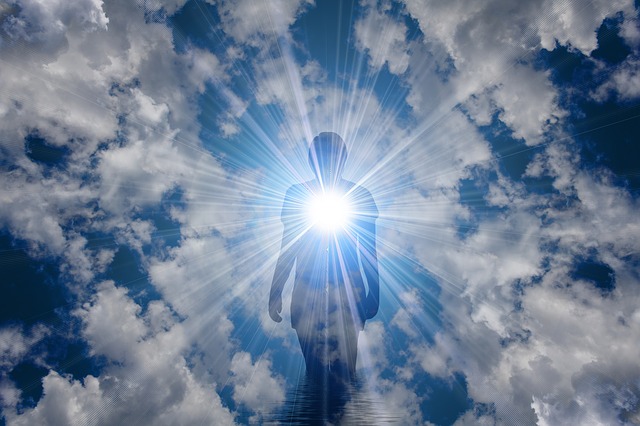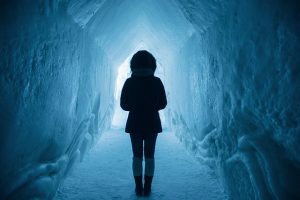 DD asks: “What do you make of Near Death Experiences and what position does the Catholic Church take on this phenomenon?”
DD asks: “What do you make of Near Death Experiences and what position does the Catholic Church take on this phenomenon?”
According to a recent statement by Msgr. Charles Pope, the Church has no official teaching on Near Death Experiences (NDEs).
In the same post, Msgr. Pope also makes an important point about popular versions of NDEs and the fact that they almost always feature a very non-biblical version of life after death.
As he explains: “The Scriptures do not say we die and at once experience the pleasantries of heaven. Rather, our first destination is the judgment seat of Christ (cf. 2 Cor 5:10, Heb 9:27). Further, St. Paul describes a kind of fire that both purifies us and burns away any imperfections: ‘[The judgment day] will be revealed with fire, and the fire [itself] will test the quality of each one’s work. If the work stands that someone built upon the foundation, that person will receive a wage. But if someone’s work is burned up, that one will suffer loss; the person will be saved, but only as through fire’ (1 Cor 3:13-15).”
In addition to excluding any mention of judgement, they also rarely identify the “Light” as Jesus Christ. Why is this? Has the science of NDEs created an alternate view of life after death?
Not at all. The reason for these anomalies is that this fascinating phenomenon has fallen victim to the New Age movement. This is why we so rarely hear about NDEs that name the “being of light” as Jesus Christ, that involve a specific judgment, or that involve anything negative such as an experience of hell.
What most people don’t know is that the New Age “spin” on the study of NDEs dates back to the very beginning of the modern NDE movement which was largely founded by people who were heavily involved in the New Age.
For example, the man considered to be the father of the modern NDE movement is Raymond A. Moody, M.D. whose 1975 book Life after Life was considered groundbreaking because it documented the 15 elements commonly found in all NDEs such as the tunnel, buzzing noise, light, etc. A parapsychologist with a medical degree, Moody believes in reincarnation and believes he has had nine past lives. He also dabbles in the occult in his private research center named the Dr. John Dee Theater of the Mind where he conducts paranormal studies and engages in scrying, a form of divination that involves gazing into a reflective object like a mirror or crystal.
Dr. Moody openly admits that his background, opinions and prejudices influenced the way he wrote the book. What were those influences? Although raised a Methodist, he openly mocks Christianity in some places in his book, such as when he dismisses the traditional concept of heaven and hell as “a cartoonist’s heaven of pearly gates” which he claims no one ever described to him.
 Another player in the early NDE movement was Elisabeth Kubler-Ross, M.D., the famed thanatologist (a person who studies the medical, social and psychological aspects of death) worked closely with Moody and wrote the foreword of his book. She was very involved in spiritism and claimed to have a personal spirit guide named Salem. Kubler-Ross was also closely associated with Jay Barham, a man who claimed to be psychic and who conducted seances that included sexual intercourse between participants and entities from the spirit world. By the time of her death in 2004, she lost all credibility with the medical community and was ultimately awarded a “Loose Screw Award” by Psychology Today magazine in 2005.
Another player in the early NDE movement was Elisabeth Kubler-Ross, M.D., the famed thanatologist (a person who studies the medical, social and psychological aspects of death) worked closely with Moody and wrote the foreword of his book. She was very involved in spiritism and claimed to have a personal spirit guide named Salem. Kubler-Ross was also closely associated with Jay Barham, a man who claimed to be psychic and who conducted seances that included sexual intercourse between participants and entities from the spirit world. By the time of her death in 2004, she lost all credibility with the medical community and was ultimately awarded a “Loose Screw Award” by Psychology Today magazine in 2005.
Kenneth Ring, another New Age NDE pioneer, author of Life at Death: A Scientific Investigation of the Near-Death Experience, is a trained psychologist. Ring claims to be of no particular religious persuasion and once told an interviewer that he could not recall a single case of someone who reported being judged by God. Instead, he spews the typical New Age “talking points” in his book, saying the “light” is “actually a reflection of one’s own inherent divine nature and symbolizes the higher self.”
These are only a few of the characters who inspired the modern NDE movement, a phenomena that has spawned dozens of tales similar to the multi-million dollar best seller Embraced by the Light by Betty J. Eadie which claimed everyone went to heaven, even the likes of Hitler and Pol Pot.
A few years ago, Ebon Alexander, a neurosurgeon who contracted a rare bacterial infection wrote about his near death experience during which an unknown woman accompanied him during this visit and delivered messages to him via a kind of interior locution. The general messages were: “You are loved and cherished, dearly, forever,“ ”You have nothing to fear“ and ”There is nothing you can do wrong.”
The scientific study of NDEs presents a much different picture about the next life being all about fluffy pink clouds and rainbows. Notwithstanding the prevailing school of thought in the medical community that these experiences could be the result of drugs or neurological functions that occur at the end of life, disinterested researchers such as Carol Zaleski, a professor of religion at Smith College, record not only heavenly but hellish NDE experiences. Her book Otherworld Journeys: Accounts of Near-Death Experiences in Medieval and Modern Times is widely respected for its academic excellence.
Not surprisingly, Christian researchers such as cardiologist Maurice Rawlings, author of Beyond Death’s Door, also record hellish NDEs that include encounters with Satan and sensations of being in a lake of fire. Some of these experiences were so traumatic that those who had them psychologically suppressed them.
Then there is the famous story of Father Steven Scheier, a parish priest from Kansas who suffered a broken neck during a head-on collision in 1985. During a time when he thought he had died, he remembered being judged worthy of hell and said he heard the voice of Our Lady pleading for him. The Lord relented and gave Fr. Scheier a second chance.
New Agers like to say that NDEs change people’s lives in positive ways, but there is evidence to support the opposite point of view. For instance, P. M. H. Atwater, who is deeply involved in the occult and mediumship, describes many unpleasant aftereffects of NDEs in her book Coming Back to Life. She found that many people who had NDEs later experienced family problems, divorce, the inability to hold a job and/or make a commitment to either a relationship or a vocation.
While NDEs make fascinating reading, some of the best advice I’ve ever gotten on this subject came from Reality magazine, which is a publication of the Irish Redemptorists.
” . . .(W)e might say that widely reported incidents of near-death experiences are at least an indicator that what we assert by faith might well correlate with what some have experienced. Beyond that, however, we ought to place the mysterious issue of death squarely where it belongs: under the wide mantle of God’s merciful love.”
Msgr. Pope agrees: “We do better to stick to what God has revealed and prepare for a holy death.”
© All Rights Reserved, Living His Life Abundantly®/Women of Grace® http://www.womenofgrace.com









